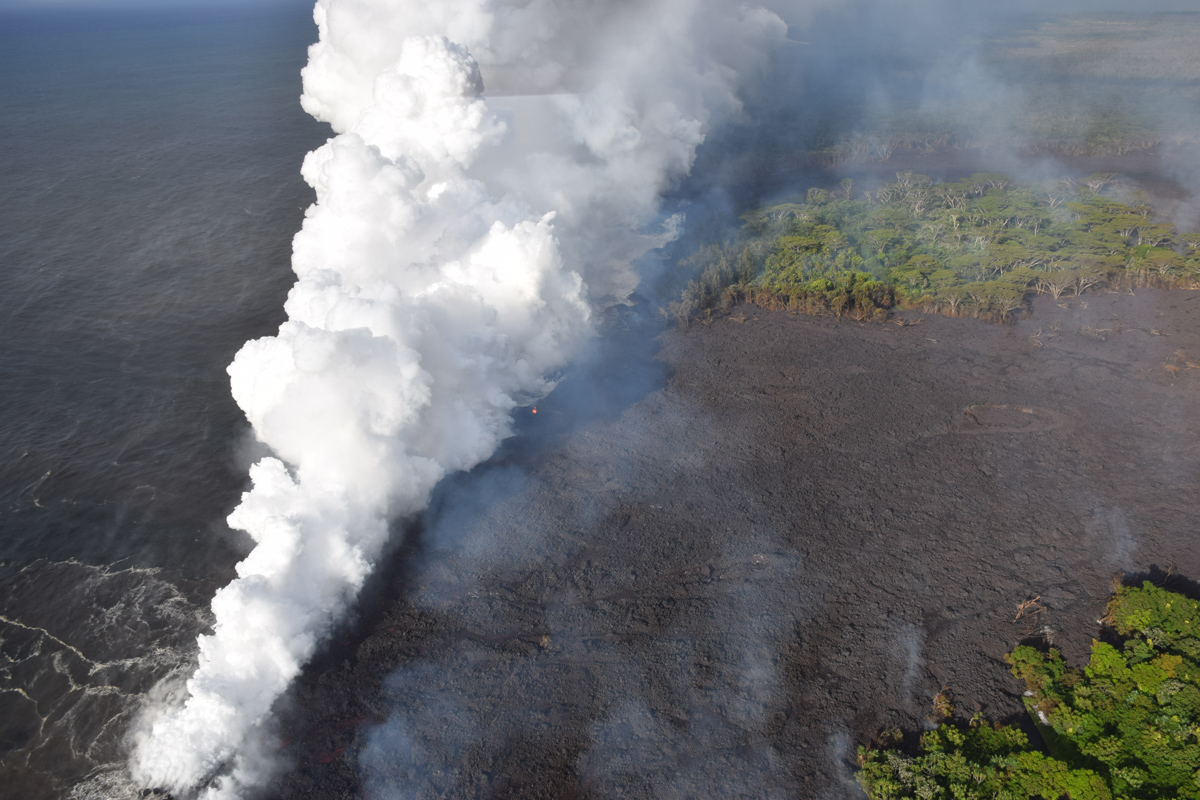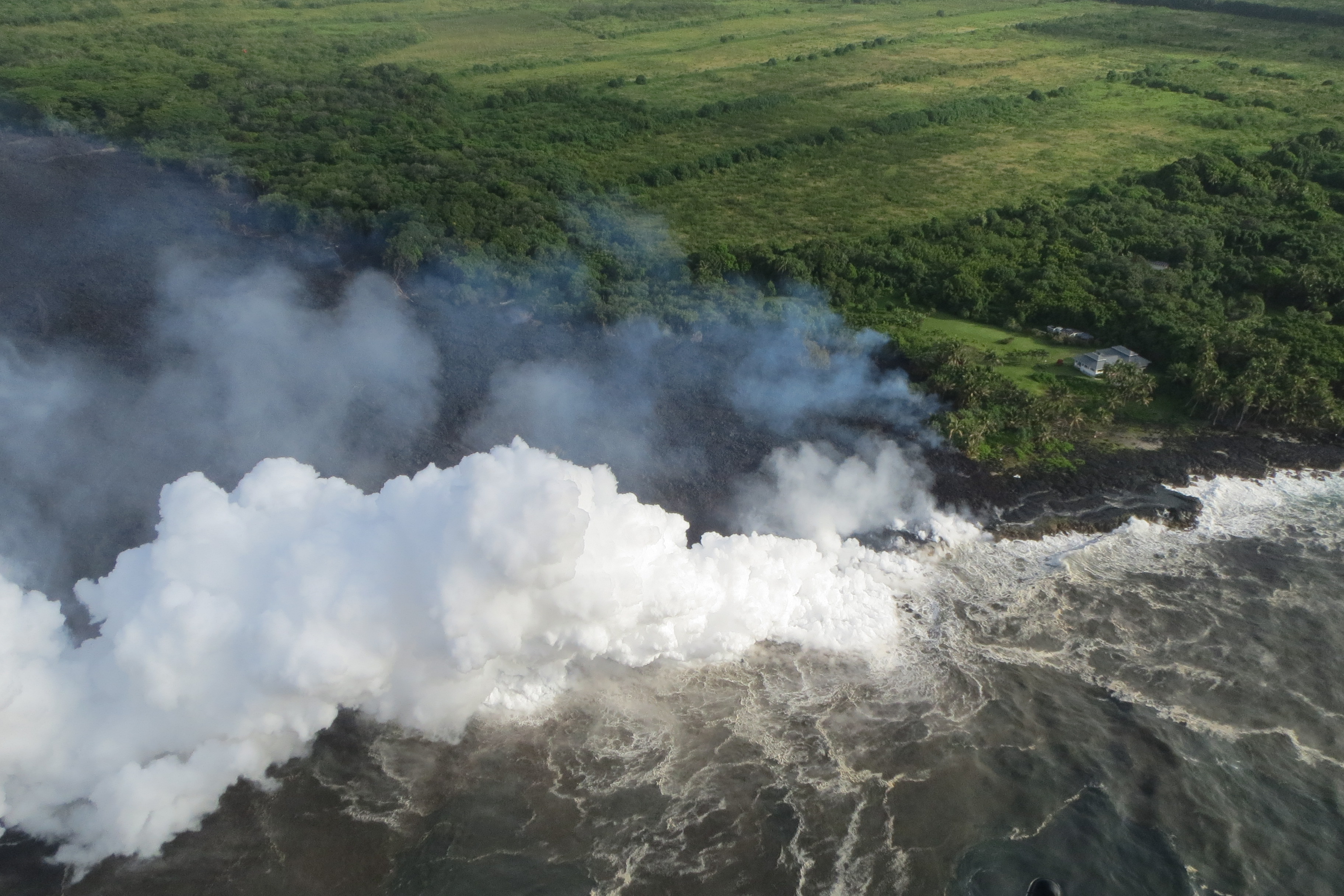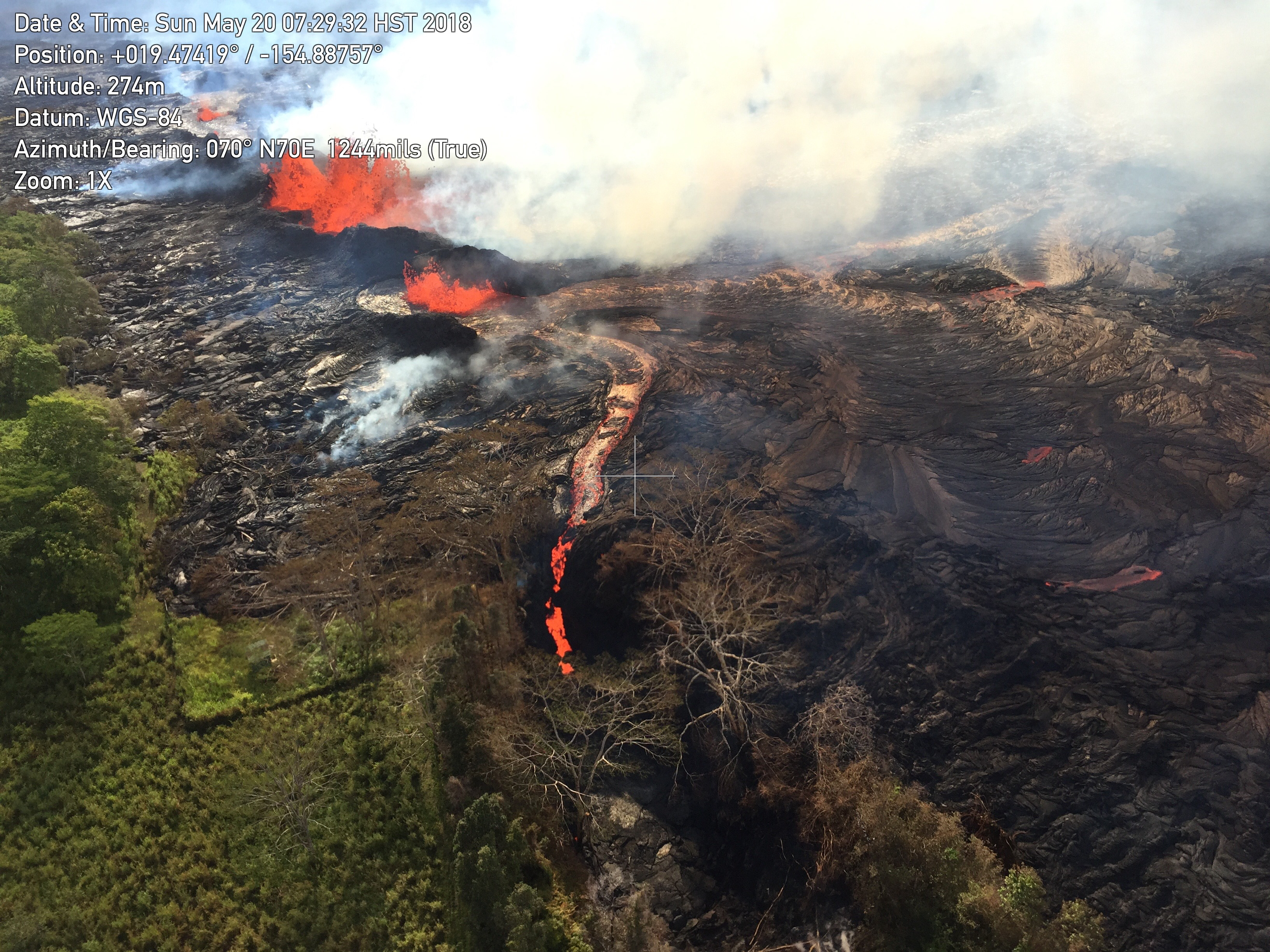“Laze” Hazard at Kīlauea Lava Ocean Entry

Late Saturday night (May 19, 2018), the fissure 20 lava flow reached the ocean. Hot lava entering the ocean creates a dense white plume called “laze” (short for “lava haze”). Laze is formed as hot lava boils seawater to dryness. The process leads to a series of chemical reactions that result in the formation of a billowing white cloud composed of a mixture of condensed seawater steam, hydrochloric acid gas, and tiny shards of volcanic glass. This mixture has the stinging and corrosive properties of dilute battery acid, and should be avoided. Because laze can be blown downwind, its corrosive effects can extend far beyond the actual ocean entry area. PC: US Geological Survey
The Coast Guard is enforcing a Lava Entry Safety Zone for waters surrounding the the new lava entry into the Pacific Ocean at Mackenzie State Park in Lower Puna. The safety zones includes navigable waters extending 984 feet in all directions around the lava ocean entry.

View of ocean entry point from helicopter overflight on May 20, 2018, at 6:45 AM HST. PC: US Geological Survey.
Authorities warn that getting too close can result in serious injury or death. Officials with the Hawai’i Civil Defense agency say lava entering the ocean produces laze, which is formed when hot lava hits the ocean sending hydrochloric acid and steam with fine glass particles into the air.
In addition, ground deformation, seismic activity, newly formed lava delta or existing cliff collapses are all coastal hazards, including the potential for localized tsunamis along the coastline and out to sea.
Enforcement of the Lower Puna safety zone began on Sunday morning.
Lt. Cmdr. John Bannon, Coast Guard Sector Honolulu waterways management lead said, “All waterway users should be aware of the hazardous conditions associated with such an event. Getting too close to the lava can result in serious injury or death.”
Based on a review of nearly 30 years of lava and ejection distance observations in the Hawaiʻi Volcano Observatory records, a radius of 300 meters was determined as a reasonable minimum high hazard zone around a point of ocean entry.

Lava from the eastern channel of the Fissure 20 complex is flowing into a crack in the ground that opened on the morning of Sunday May 20, 2018. The crack is “robbing” the easternmost channel of lava and the eastern ocean entry is therefore less vigorous than the western entry point (see photos above). PC: US Geological Survey
Another Explosive Eruption at Kīlauea Summit
Meantime, another explosive eruption was reported at the Kīlauea summit on Hawaiʻi Island overnight. The incident was reported at around 12:55 a.m. on Monday, May 21, 2018.
The Hawaiian Volcano Observatory reports that the resulting 7,000 foot ash plume may affect the surrounding areas with wind carrying ash to the southwest toward Wood Valley, Pāhala, Nāʻālehu and Waiʻōhinu.
Scientists also continue to monitor the two active lava flows that have entered the ocean off Highway 137 near MacKenzie State Park.
Since the eruption onset in the East Rift Zone on May 3, 2018, a total of 47 structures have been destroyed.










